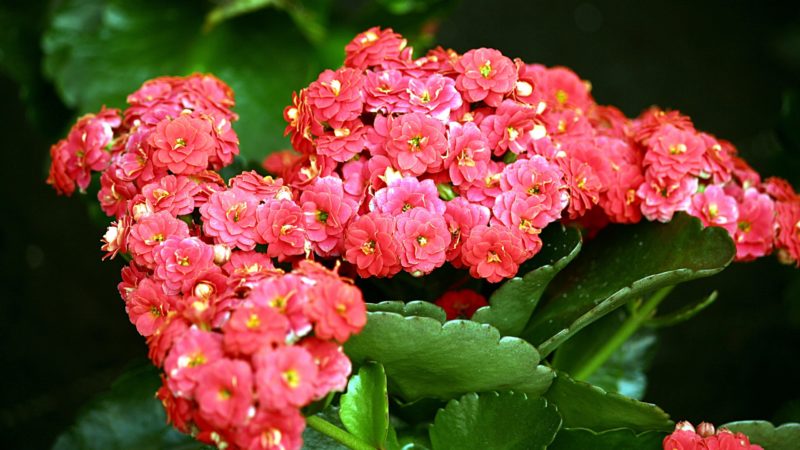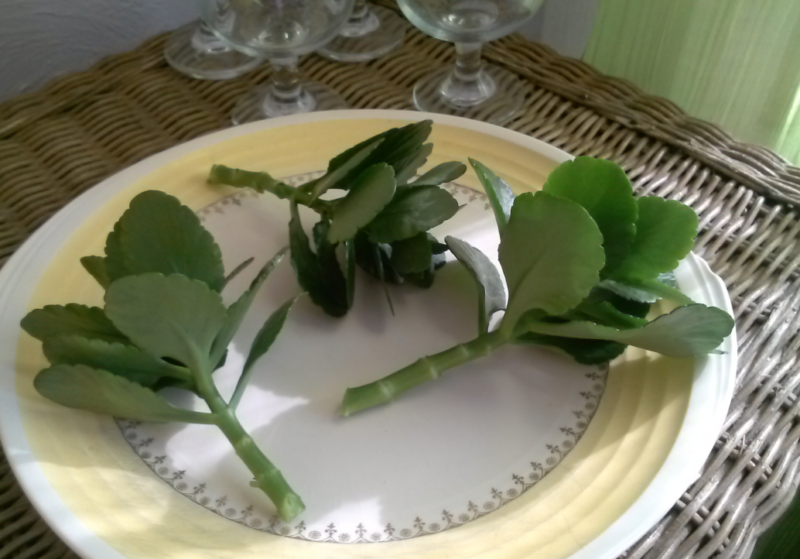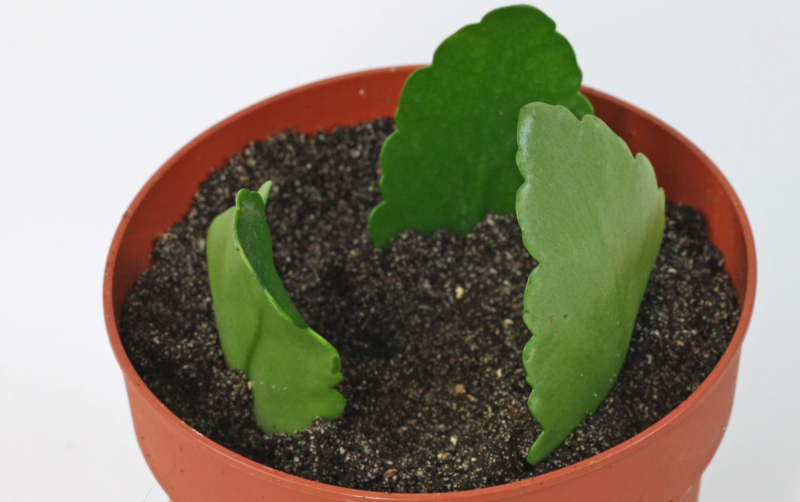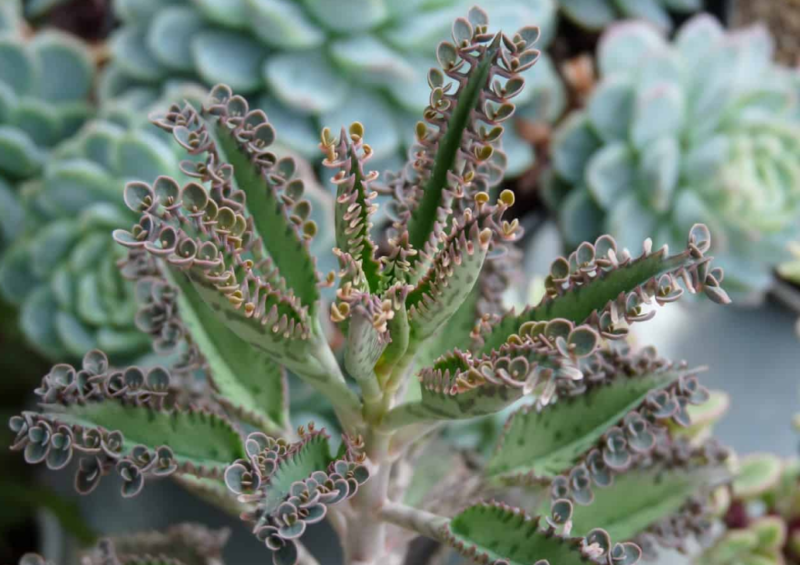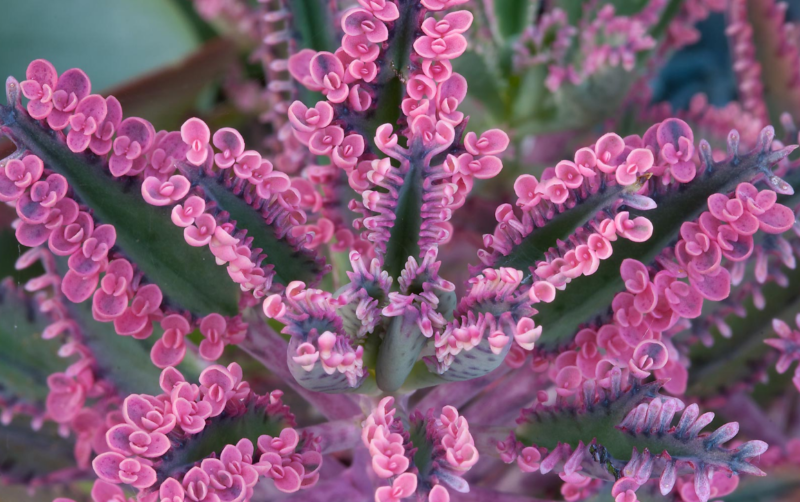Beginning collectors of flowering plants are attracted by the vibrant and diverse species of Kalanchoe. And many do not know that they annually reduce the flowering intensity. Only an updated plant will delight with a riot of colors. Reproduction of Kalanchoe will solve this problem, especially since there are many such methods and they do not present any difficulties.
Material Content:
Botanical description of Kalanchoe
The range of Kalanchoe in the wild is large and diverse. They can be found in the succulent forests of Madagascar, in the subtropics and semi-deserts of South Africa, East Asia, and also in the tropical zone of South America. There are about 200 species, among which there are herbs, shrubs, epiphytes and vines. The genus of succulent Kalanchoe belongs to the Tolstyankov family.
All plants of the genus differ in external characteristics:
- from the majestic multi-meter giants to the "midgets" of 5 cm;
- annual, biennial or perennial;
- leaf plates narrow or wide, glabrous or pubescent, with serrate or ragged edges, sessile or cuttings, of various sizes and shades;
- stems erect and creeping;
- flowering and decorative foliage;
- flowers are small or large, fragrant and odorless, collected in umbrella inflorescences or in axillary panicles;
- a tubular nimbus is with single-row petals or double, the color of the inflorescences is pink, yellow, red, purple;
- propagated by seeds, leaf, offspring, cuttings, children or axillary buds.
They have common properties that emphasize the origin:
- evergreens;
- thermophilic and photophilous;
- leaves and stems are leathery, thick and juicy, able to accumulate moisture;
- the roots are short, but highly branched, powerful.
In indoor floriculture, only a few types of Kalanchoe and their selection varieties are used.
Among the flowering species, one can distinguish:
- Kalanchoe Flaming with bright red umbrellas of small tubular flowers, bush height up to 40 cm, prefer medium temperature and low humidity.
- Kalanchoe Blossfeld, has a rounded shape of a bush 30 cm high, ovoid green leaves with a red edging and numerous small flowers with spiky petals, collected in dense umbrella inflorescences. They prefer humus-rich soils.
- Tubiflora (tirsiflora) - long, more than 10 cm, narrow thick rod-shaped leaves located on a thickened rounded trunk, crown several brood buds at once, giving the bush a special exotic look. Drooping large flowers on long thick peduncles come in different saturated shades of red, orange, white, purple, and others. The height of the bush is different, from 30 to 60 cm.
With decorative leaves:
- Laciniata or "deer horns." Original deeply dissected narrow waxy leaves with a strongly serrated edge are located on a straight, fleshy stem, which begins to creep with age.
- Kalanchoe Lucia. Fleshy rounded sessile plates of leaves twist around a short trunk, forming a kind of "rosebud", the top of the plate is purple, the bottom is light green. Blooms in 2 years of life with bright yellow flowers, after flowering the trunk and leaves die off.
- Paniculata. White-gray rounded plates of fleshy leaves are located along the stem almost horizontally and in the same plane, at the apex more often than below. Soft yellow small flowers collected in a panicle bloom in spring.
Kalanchoe with healing juice:
- Degremon or briofillum. It is famous not only for the decorativeness of wax flowers, but also for its healing effect. Juice helps rejuvenate all body functions.
- Cirrus. It treats colds, disorders of the genitourinary system, loose stools, heals wounds, but is contraindicated in cores. It has a pleasant tart taste.
- Kalanchoe Fedchenko. Rare view. It is found in Central Asia. Used by allergy sufferers and treats burns.
Experienced flower growers warn that only these three species are medicinal, all remaining only represent decorative value.
Plant propagation methods
Most representatives of the genus Kalanchoe are endemic plants, whose homeland is the island of Madagascar with various soils and living conditions. Over the years of evolution, in order to survive, plants have adapted to multiply by any possible means available to the species in a particular zone.
At home, it is better to plant a plant using vegetative methods - quickly and without labor.
The choice of propagation method depends on the representative of the species, but two are considered universal: cuttings and leaf. You can propagate throughout the year.
The composition of the substrate for rooting: the usual universal primer for flowers and sand, mixed in 1: 1 proportions. You can add perlite, then the soil will retain moisture, which is important for Kalanchoe. The soil must be sterile.
Air temperature: daytime from + 22o to + 25o, night from + 18o to + 20o.
Pot: container diameter 6–8 cm, 1/3 filled with drainage, always with an outlet for water.
Cuttings
Propagation of Kalanchoe by cuttings is favorable; they give roots equally quickly both in water and in soil. You can use the material after trimming the adult specimen or take any apical shoot. The main thing is that he be young, juicy and healthy, preferably up to 10 cm.
Then place the dried stalk 1/3 in water at room temperature and after 2 weeks roots will appear, then you can plant it in a permanent place.
It is placed in the ground, deepening to the leaves (4-6 cm). There is no need to close anything to create a greenhouse effect. It is necessary to keep the soil moist at all times.
Leaf
In this case, there are no problems with planting material at all. You can even use parts of the leaf plate and fallen, but still juicy leaves, if only they were healthy.
Planting technology is the same as that of cuttings. We put the fallen leaves in water (you can use a saucer if there is no petiole), we are waiting for the roots to appear.
Dry the cut leaf plates or parts thereof, dry, root in a pot with a moist substrate, but here it is necessary to cover with a transparent cap until new sprouts appear.
Care changes a little, it is necessary:
- monitor the moisture of the soil (prevent flooding of the soil);
- air the greenhouse daily and remove condensation from it.
The propagation of Kalanchoe by the leaf occurs very quickly, after a few days the sprout will begin to hatch.
Features for different types
Although the survival of Kalanchoe in the soil is excellent, but for numerous varieties, you can choose the best option for reproduction, which will give 100% quick results.
For example, for Kalanchoe Degremon, the most successful choice would be reproduction by children, since he has a great many of them. Growing along the edge of the leaf in each recess, the baby releases aerial roots, falls and takes root itself, turning into a full-fledged plant. And in the same way, Cirrus, Trubkotsvetnoe and many other species having brood buds propagate.
Kalanchoe Kalandiva, endowed with juicy thick leaves and petioles, is quicker to renew these parts, as well as the progenitor Blossfeld or the magnificent ampelous appearance of Mangin.
Types of succulents with pubescent leaves, such as those of Kalanchoe Felted, also propagate by leaf, however, rooting takes longer than usual, only after 4 weeks roots appear.
Paniculate-flowering species releases axillary buds after falling leaves, and they serve as a source of renewal of the species.
Each method of reproduction to one degree or another is suitable for any species of Kalanchoe due to its incredible vitality that has developed over the years of evolution.
Flower transplants during propagation
You can update the old plant with a transplant, separating the emerging young offspring. The plant is taken out of the pot, carefully free the roots from the ground, straightened. With a sharp knife, young sprouts are separated along with the roots. This will be the planting material.
Change the soil to the old plant (if you want to save it). Individual pots are prepared for new seedlings.
This method of renewal is considered very productive. It turns out immediately a new bush that can soon bloom.
Leaflets or cuttings: which is more convenient
The answer to this question depends on your own preferences and the achievement of certain tasks. If the plant does not yet have a formed cuttings, and you need to get a "duplicate" of the flower, then you can propagate by leaf, they are always present in succulents.
Propagating the plant by the cuttings, a bush forms faster and it becomes possible to see flowering earlier.
The most common mistakes
Persistent and unpretentious Kalanchoe can not take root in only a few cases:
- incorrectly selected soil. In dense, poorly breathable soil, if too moist, thin delicate roots simply rot. The structure should be light and loose, not to retain excess moisture;
- the vegetative parts rotted - they did not allow the slices to dry. It is necessary to dry the cut material for several hours, or even days, until the juice stops flowing, and the place of the cut is tightened with a film, only such a seedling will give roots.
Another mistake is made by beginners when choosing a handle. Old lignified shoots are not suitable for renewal. They will give roots, but the bush itself will grow unevenly, the crown will become bare over time and the plant will lose its decorative effect.
Pay particular attention to planting material. Choose young soft, fragile twigs with lush foliage, then the Kalanchoe will grow fluffy, with perfect shapes.



